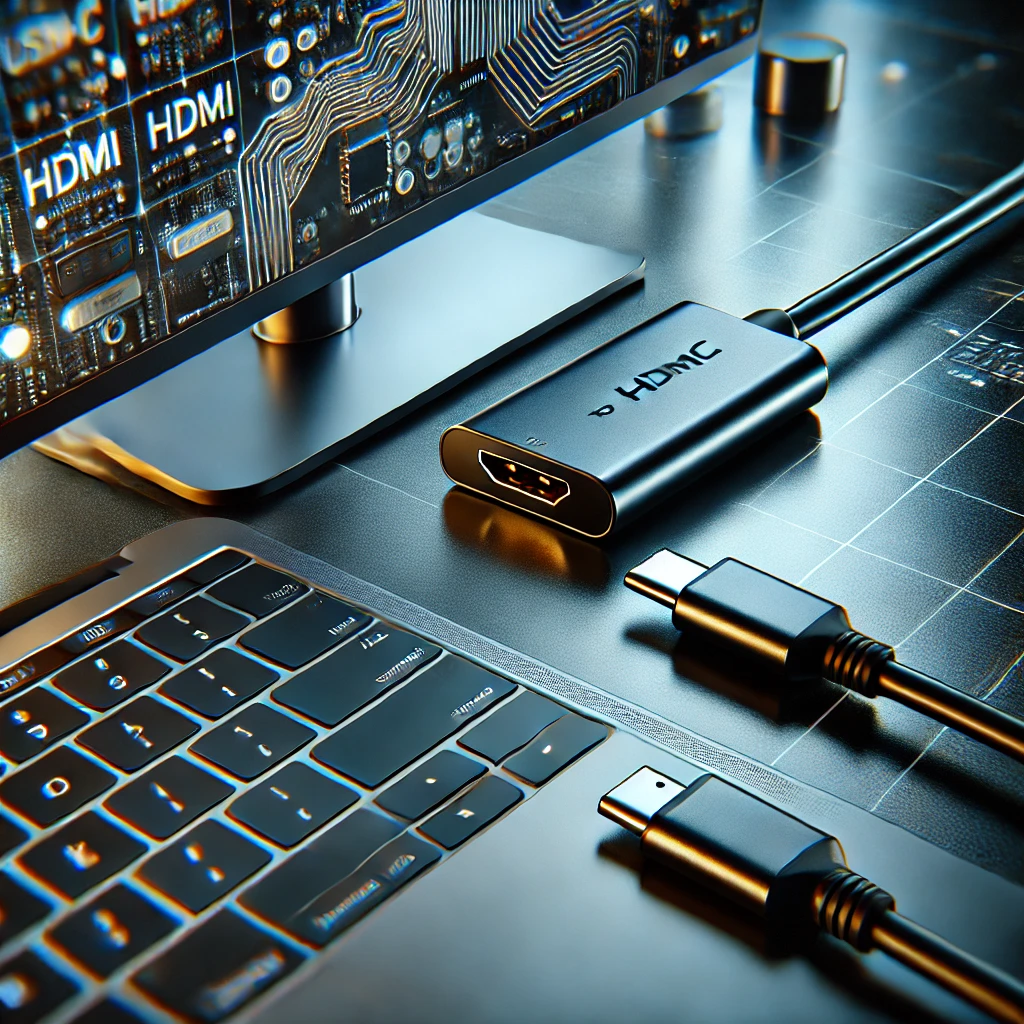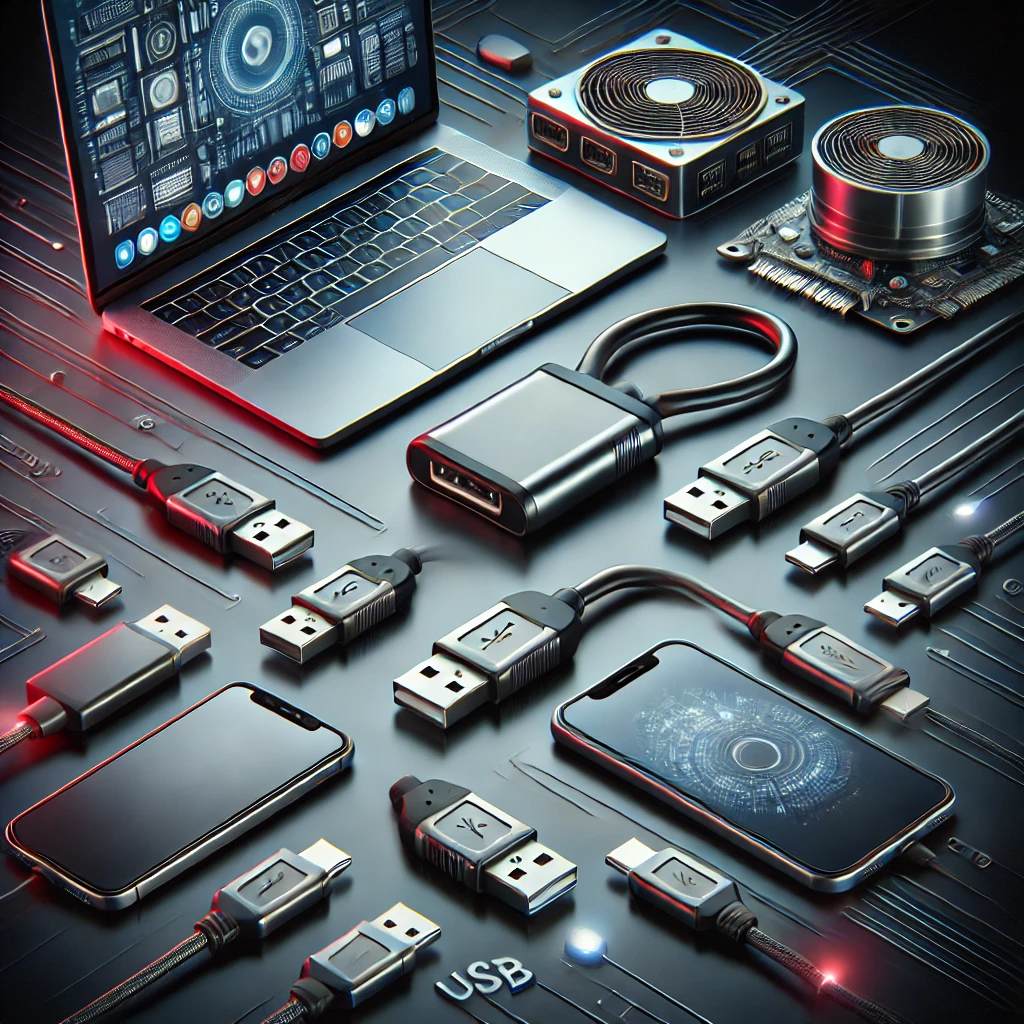With the rise of USB-C, it’s no surprise that many users are looking for ways to connect their modern devices to HDMI-enabled displays. Whether for work, gaming, or entertainment, USB-C to HDMI adapters are essential for bridging the gap between the newer USB-C port and older HDMI-equipped devices like monitors, TVs, and projectors. While pre-made adapters are readily available on the market, many tech enthusiasts are drawn to the idea of building their own DIY USB-C to HDMI adapter as a cost-effective and customizable solution.
In this article, we’ll compare DIY USB-C to HDMI adapters with pre-made solutions, discussing the pros, cons, and considerations for both. By the end of this guide, you’ll have a clear understanding of which option is best suited for your needs, whether you want to save money or enjoy the satisfaction of building something yourself.
What is a USB-C to HDMI Adapter? A Comprehensive Explanation
A USB-C to HDMI adapter is a crucial device that enables you to connect your USB-C-enabled devices, such as laptops, smartphones, tablets, or other modern tech, to an HDMI-equipped display, including TVs, monitors, and projectors. USB-C is quickly becoming the new standard for data and power transmission due to its high speed and versatility. However, HDMI remains a dominant connection standard for video and audio output, especially in external displays and media devices. The USB-C to HDMI adapter bridges these two different technologies, allowing seamless data transmission from your USB-C device to an HDMI display.
The USB-C to HDMI adapter essentially takes the digital video signal from your USB-C port and converts it into a format compatible with the HDMI standard, enabling you to view your device’s content on a larger screen. This makes the adapter ideal for a wide variety of uses, such as presentations, watching movies, gaming, or professional work where you need to output video content from smaller devices to larger displays.
How Does a USB-C to HDMI Adapter Work?
A USB-C to HDMI adapter works by converting the digital signal from the USB-C output into an HDMI-compatible signal that your display can understand. Here’s a closer look at the process:
- Signal Conversion: The USB-C port on your device sends out a digital signal, which is then converted by the adapter into HDMI format. The adapter has an internal chip that performs this signal conversion to match the specifications of the HDMI protocol (which typically includes both video and audio signals).
- Transmission: Once the signal is converted, it’s transmitted through the HDMI cable, which is then plugged into your HDMI-equipped display. This process ensures that the image or video is displayed correctly, and audio can be sent to the connected display’s speakers if the adapter supports audio transmission.
- Video Output: Modern USB-C ports (specifically those with DisplayPort Alternate Mode) allow video output. These ports can carry not only data and power but also high-definition video. When you use an adapter, the HDMI output will support various video resolutions, from 1080p Full HD to 4K and sometimes even 8K, depending on the adapter’s capabilities.
- Power Requirements: USB-C ports can deliver significant power, but when connecting larger displays or using more demanding functions like 4K video, the adapter might need additional power. Some adapters come with an extra USB power input to ensure stable performance, especially when multiple peripherals are connected.
Why Do You Need a USB-C to HDMI Adapter?
The need for a USB-C to HDMI adapter arises due to the increasing number of devices that now come with USB-C ports, such as laptops, smartphones, tablets, and gaming consoles. At the same time, HDMI remains one of the most popular and widely used standards for high-definition video and audio transmission. So, why is the USB-C to HDMI adapter essential?
- Convenience: Many modern laptops and smartphones, especially MacBooks, Chromebooks, and Samsung Galaxy devices, have adopted the USB-C port as their standard. However, these devices still need to be connected to older HDMI-equipped displays for tasks such as streaming movies, projecting presentations, or even gaming on a larger screen. A USB-C to HDMI adapter makes this easy, without requiring users to upgrade their HDMI displays.
- Versatility: USB-C to HDMI adapters are highly versatile and can support a wide range of devices. Whether you’re using a laptop to connect to a monitor, a smartphone to a TV, or a tablet to a projector, a USB-C to HDMI adapter can solve your connectivity needs. With the increasing popularity of USB-C as the universal standard, having an adapter allows you to access HDMI devices wherever you go.
- High-Quality Video and Audio: Depending on the specifications of the USB-C to HDMI adapter, many support high-definition video, including 4K resolutions, and can also transmit multi-channel audio. This ensures you get crystal-clear video quality and rich sound when connecting your devices to external displays, perfect for gaming or watching content in higher resolution formats.
- Portable and Lightweight: USB-C to HDMI adapters are typically compact and lightweight, making them ideal for travel. Unlike bulky HDMI cables or adapters, these small devices can easily fit into a laptop bag or backpack, providing a convenient solution for connecting your device to any HDMI-equipped display without additional hassle.
- Cost-Effective: Compared to purchasing new devices or upgrading your laptop or smartphone, using an affordable USB-C to HDMI adapter is a cost-effective solution to connect your existing device to modern displays. This allows users to take full advantage of their devices without spending money on new monitors or TV models with native USB-C ports.
When Should You Use a USB-C to HDMI Adapter?
There are many scenarios where a USB-C to HDMI adapter becomes useful. Here are some common situations where you’ll want to have one on hand:
- Presentations and Meetings: If you’re presenting from your laptop or tablet, the USB-C to HDMI adapter ensures that you can easily connect to the projector or monitor in a meeting room or classroom that only supports HDMI input.
- Streaming and Entertainment: Connecting your USB-C-equipped smartphone, tablet, or laptop to a TV or projector using the HDMI output allows you to enjoy movies, videos, and other content on a bigger screen with superior resolution and sound quality.
- Gaming: For gamers who prefer to play on a larger screen, using a USB-C to HDMI adapter with your gaming laptop or console allows for high-definition gameplay on an HDMI-compatible TV or monitor. This ensures smooth graphics and enhances your gaming experience.
- Mobile Device Connectivity: Many smartphones, especially those from Samsung and Google, support video output via USB-C. If you want to stream content from your phone to your TV or use it as a secondary display, a USB-C to HDMI adapter is the easiest way to make this happen.
DIY USB-C to HDMI Adapter: A Step-by-Step Guide for Beginners
For those who enjoy building their own tech gadgets, creating a DIY USB-C to HDMI adapter can be an exciting project. While it might take a little more time and effort, it offers several advantages in terms of customization and cost savings.
Materials You’ll Need:
- USB-C Male Connector: To plug into your USB-C device (laptop, tablet, etc.).
- HDMI Male Connector: To plug into your HDMI-enabled display (TV, monitor, etc.).
- HDMI Cable: To connect the HDMI connector to the display.
- Soldering Tools: To attach the wires to the connectors (if necessary).
- USB-C Cable: High-quality cables for reliable data transfer.
- Heat Shrink Tubing: For insulation and protection.
- Multimeter: For testing your connections.
Steps for Building Your Own USB-C to HDMI Adapter:
- Prepare the Components: Begin by cutting the USB-C and HDMI cables to the required lengths. Strip the outer insulation to reveal the wires inside.
- Solder the Connections: Identify the video output pins on the USB-C connector and the video input pins on the HDMI connector. Use your soldering iron to connect the corresponding wires.
- Attach the HDMI Cable: Solder the appropriate wires from the USB-C side to the HDMI cable, ensuring the signal and ground lines are correctly connected.
- Insulate the Wires: Once you’ve soldered the connections, use heat shrink tubing or electrical tape to cover the exposed wires and prevent short circuits.
- Test the Adapter: After assembly, plug the USB-C end into your device and the HDMI end into a monitor or TV. Check for signal output and make any adjustments as needed.
Pros of DIY USB-C to HDMI Adapters:
- Cost-Effective: DIY adapters are often much cheaper to build than buying pre-made ones, especially if you already have some of the necessary components.
- Customization: You can adjust the length of the cables and the design of the adapter to fit your specific needs.
- Hands-On Experience: Building your own adapter is a great way to learn about electronics and gain hands-on experience with soldering and assembly.
Cons of DIY USB-C to HDMI Adapters:
- Time-Consuming: Building your own adapter can take time, especially if you’re not familiar with soldering or electronics.
- Potential Compatibility Issues: Without the right components or sufficient knowledge of the technology, you might encounter compatibility issues or subpar performance.
- No Warranty: DIY projects generally don’t come with a manufacturer’s warranty, so if something goes wrong, you’ll be on your own.
Pre-Made USB-C to HDMI Adapters: The Convenient Solution for Fast Connections
For those who need a quick and easy solution, pre-made USB-C to HDMI adapters are widely available and come with several advantages.
How Pre-Made USB-C to HDMI Adapters Work:
Pre-made adapters are designed to plug-and-play, requiring no assembly or technical know-how. You simply plug the USB-C end into your device and the HDMI end into your display, and the adapter will handle the signal conversion. These adapters often come with features like 4K support, HDCP compatibility, and plug-and-play functionality.
Pros of Pre-Made USB-C to HDMI Adapters:
- Easy to Use: No assembly required, making them a plug-and-play solution for anyone.
- High Reliability: Pre-made adapters are built with compatibility and performance in mind, reducing the chances of signal loss or poor performance.
- Warranty and Support: Most pre-made adapters come with a manufacturer’s warranty and customer support, offering peace of mind in case something goes wrong.
- Wide Availability: Pre-made adapters are available in various price ranges, from budget-friendly options to high-end models offering extra features like 4K video output and multiple display support.
Cons of Pre-Made USB-C to HDMI Adapters:
- Cost: Pre-made adapters can be expensive, especially for high-quality or branded options.
- Less Customization: You’re limited to the length, design, and features offered by the adapter manufacturer.
- Bulkiness: Some adapters can be bulky or have extra cables that make them less portable or harder to manage.
When to Choose a DIY Adapter vs. Pre-Made Adapter
The decision to build a DIY USB-C to HDMI adapter or purchase a pre-made one depends on your needs and preferences.
- Go DIY If:
- You want to save money and don’t mind investing time in learning how to build it.
- You enjoy hands-on electronics work and want to customize the adapter to fit your specific use case.
- You need a solution for basic tasks and can tolerate potential compatibility or performance issues.
- Go Pre-Made If:
- You need a quick, reliable solution that works out of the box.
- You want to ensure high-quality performance, especially for high-resolution displays.
- You prefer the convenience of not having to deal with assembly or technical challenges.
Final Thoughts: Which Option is Right for You?
Both DIY USB-C to HDMI adapters and pre-made solutions offer unique benefits. DIY adapters can be a cost-effective and customizable option for tech enthusiasts, while pre-made adapters offer reliability, ease of use, and warranty support. Consider your level of expertise, budget, and specific needs when deciding which option is best for you.
Regardless of which path you choose, both solutions provide a practical way to connect your USB-C device to HDMI displays, whether for work, entertainment, or gaming.



